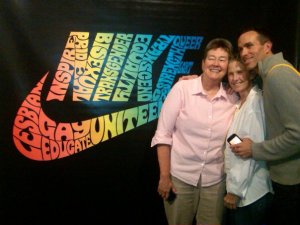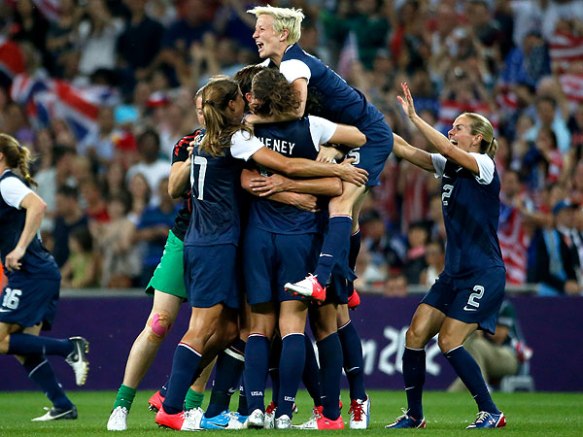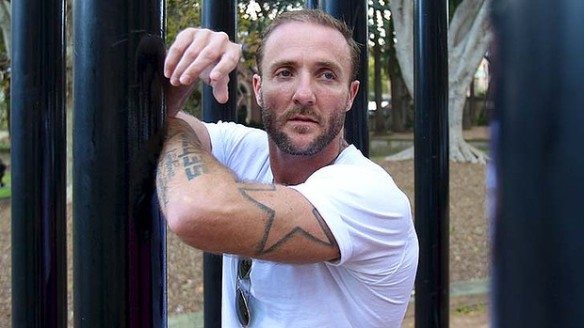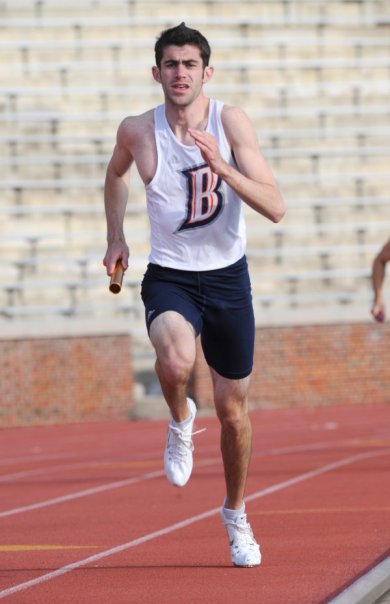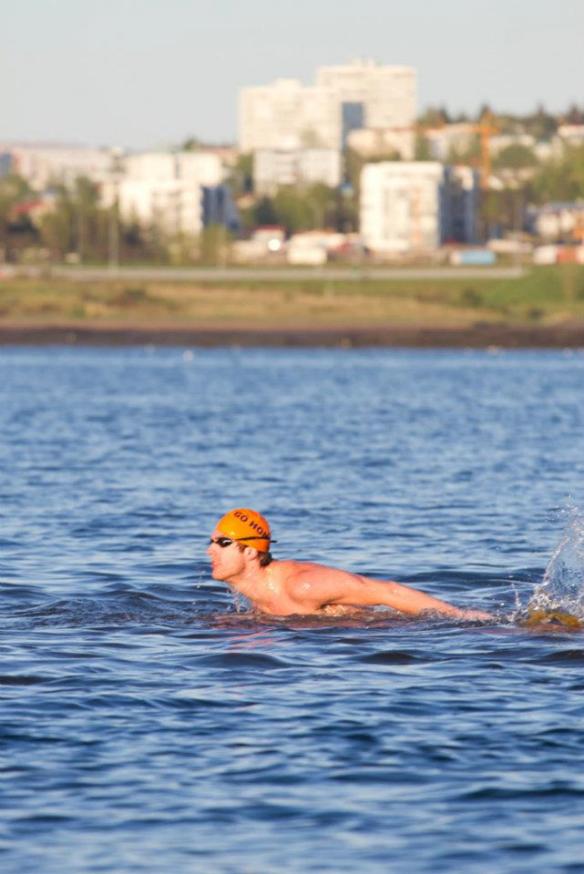
Win Chesson, Scott Jordan, David Spires and Sean Smith after a relay at IGLA Championships in Iceland. (Photo Courtesy of Onesimo Demira).
I’ve spent the night watching the US Olympic Swimming trials as very close friends and some former teammates try to make their Olympic dreams come true. It’s a moment of forced reflection. I think of the sacrifices and experiences I made in my career and the lurking question of was it worth it. Each athlete makes decisions of what is worth it to cut out of their lives to pursue their dream.
Sacrificing small things happens first. The Friday night movies with friends so you can be awake for Saturday morning practice. Then you eventually get to the point of ensuring that each piece of your life is contributing to your ultimate goal (diet, sleep, social life, stretching and icing during class, etc.) In the case of LGBT athletes some are forced to give up an environment that is healthy and accepting through portions of their career. You see it in the small number of out elite athletes and many will make different arguments. Are gay and lesbian athletes just not good enough or are they not able to deal with the extra obstacles? Several people, including myself, would argue that gay and lesbian elite athletes are there, but just not out…yet.
If gay athletes, including those at the elite level, don’t exist then how can you explain the popularity of LGBT sports organizations? They exist all over the world in different forms. I’ve been a critic in the past of the segmented LGBT category of sports competitions until I had the experience of competing in some. I have had the opportunity to compete at the OutGames in 2006, the International Gay and Lesbian Aquatic (IGLA) world championships in 2009 and most recently the IGLA world championships in Reykjavík, Iceland in May.
Obviously the Iceland competition I recently took part in is not the most competitive meet I’ve been to, but why was it so fulfilling? I asked some athletes that are in Omaha right now for US Olympic Trials and were also at IGLA in Iceland three weeks ago why they felt it was important enough to go to that meet. Their answer was simple. “It’s fun, it gives me a sense of community, and I love competing with my teammates!”
For me the unique ingredient to swimming at an IGLA meet is being able to feel whole and authentic. There is no segmented athlete self that is policing each action to cover or pass as safe or straight. All of my effort can go in to swimming and to enjoying the social aspects of the meet. I’ll admit, the social aspects which are obviously a much bigger piece of the experience these days.
What makes me most excited is to think of how we can get the competitions like those in Omaha this week to resemble the competition in Reykjavík three weeks ago in certain aspects. If we are looking for the best athletes in the world, then let’s make the playing field even for everyone.
Here are some pictures of my experience in Iceland…just for good measure.
–Sean Smith
Communications Director, Our Group Athletes

Sean Smith and David Spires bracing for the Open Water swim in Iceland. Water temp was 45 degrees Fahrenheit. Photo courtesy of Charles Ludeke (http://charlesludeke.com/)

Several Team New York Aquatics athletes at the Blue Lagoon in Iceland.

